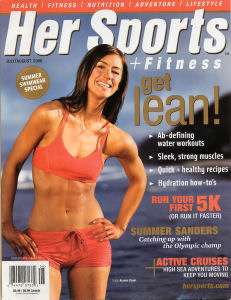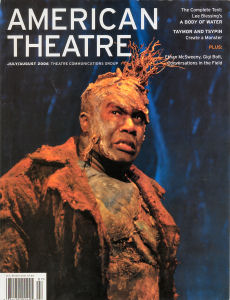HER SPORTS + FITNESS: For Sporting Women

The focus of the magazine is primarily on "average" women who participate in these activities, with a few side glances at star women athletes and their lifestyles.
A typical article in a recent issue is about getting yourself ready for your first five-kilometer run. A 5k race is 3.1 miles. It's appealing because it's relatively short, you can find a local race at that distance almost every weekend, and training for one doesn't eat up all your free time. Her Sports + Fitness proposes a detailed eight-week training program for your first 5k, including stretching, three 20- or 60-minute running sessions each week, cross training and diet tips.
The issue I've been reading also has an interesting article on muscles and how they work. Skeletal muscle, the kind connected to bones, accounts for roughly 40 percent of body weight. These muscles are made up of three different kinds of fibers―slow-twitch, fast-twitch A and fast-twitch B―and what kind of fibers predominate in an individual, the result of genetic inheritance, apparently determines whether he or she is going to be a better sprinter or marathon runner. (Note to self: analyze local nags at Aqueduct and Belmont for slow-twitch and fast-twitch fibers.)
A report on hydration says recent research indicates that you should drink according to your thirst rather then ahead of your thirst, and that a sports drink with sodium and other electrolytes is preferable to water because the former is absorbed faster into the bloodstream. The electrolytes and other nutrients make it easier for fluid to enter muscle cells and fibers quickly.
Another article is about waterboarding, described by author Barrett Perlman as the "lovechild of surfing and waterskiing." In addition to some brief tips on how to get started, there's a sidebar on gear, which is not cheap: board ($200-$600), bindings ($100-$400), rope & handle ($130-$240), life vests ($20-$130) and board shorts ($60).
About those shorts, Perlman warns, "You risk losing more than just your pride in a wipeout. Even if you're wearing the most high-performance sport-specific swimsuit there is, if you hit the water just so, your bottoms will ride up, or worse, get pulled off. A good pair of board shorts will keep you covered in style."
The issue's star athlete feature is on Summer Sanders, double gold medal-winning swimmer in the 1992 Olympics and a subsequent TV sportscaster. What does it mean to be world-class athlete? She got a call in New York City one fall day in 1999 from a girlfriend who was entered in the New York City Marathon the following morning. The friend was injured; did Summer want her race number? She jumped at the chance to enter her first marathon, and finished the race in 3 hours and 35 minutes, without any special preparation.
Her Sports + Fitness is filled with little news notes about products and relevant news developments. But the proofreading could be a little bit better. One story, about a Swedish study of cell phone use and brain tumors, says that researchers "tracked 4,400 mobile phone users between the ages of 20 and 80 for 10 years. Of the 905 who were diagnosed with malignant brain tumors, 85 were 'heavy users'." If that's the rate for such malignancies in Sweden, the country will be empty in a few years.
Each issue also contains news on sports-related travel, recipes that are healthy and easy to prepare, athletic fashions and skin care.
An annual subscription to Her Sports + Fitness (six issues) is $15.95 from the publisher; you can get a sample copy from us for $2.59.


